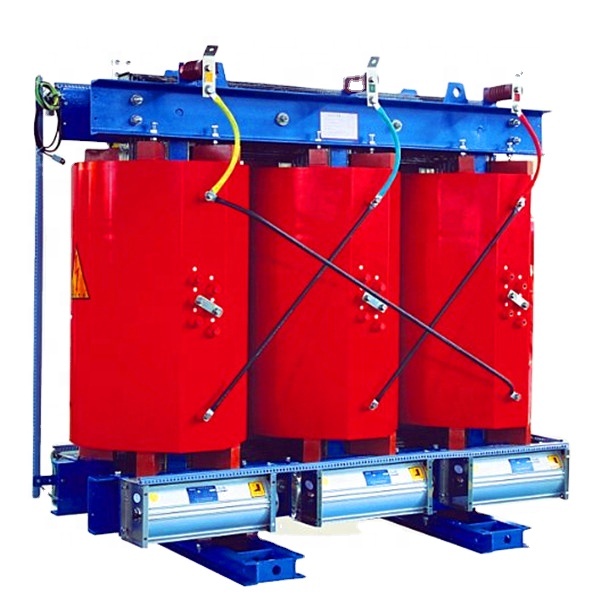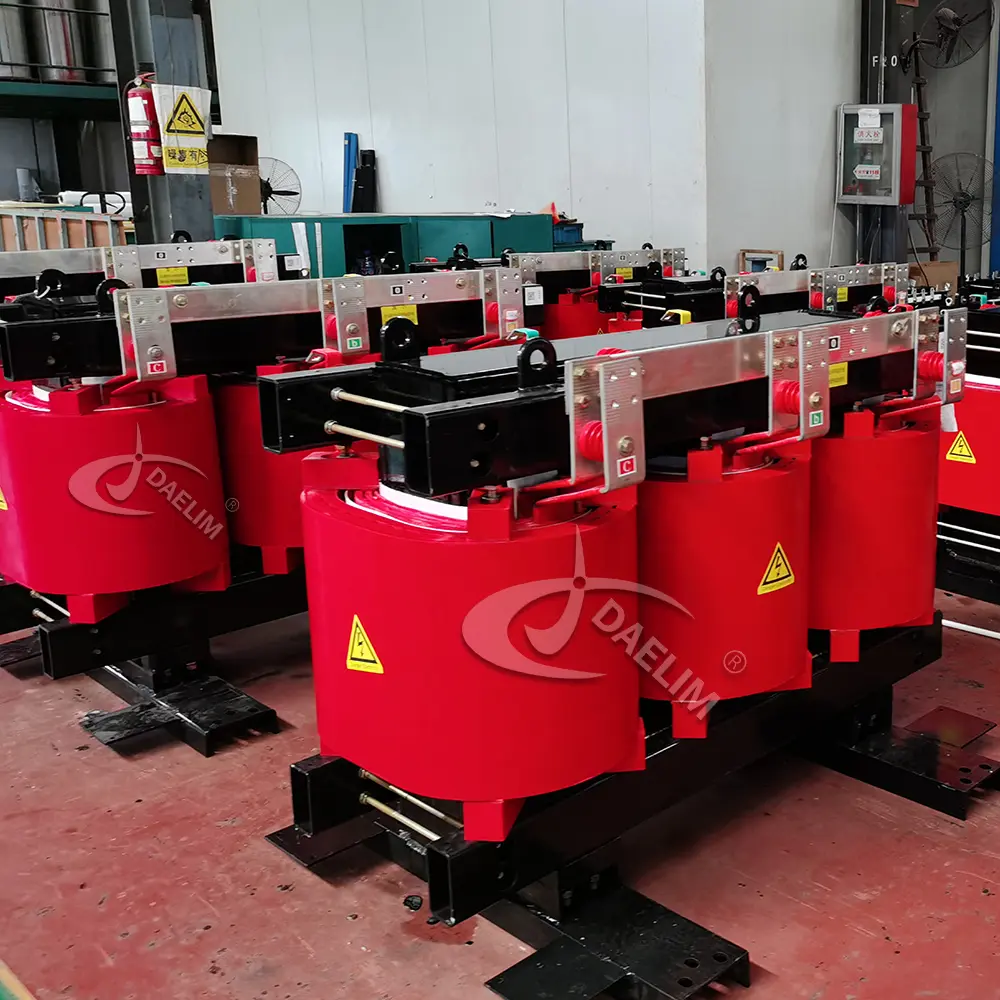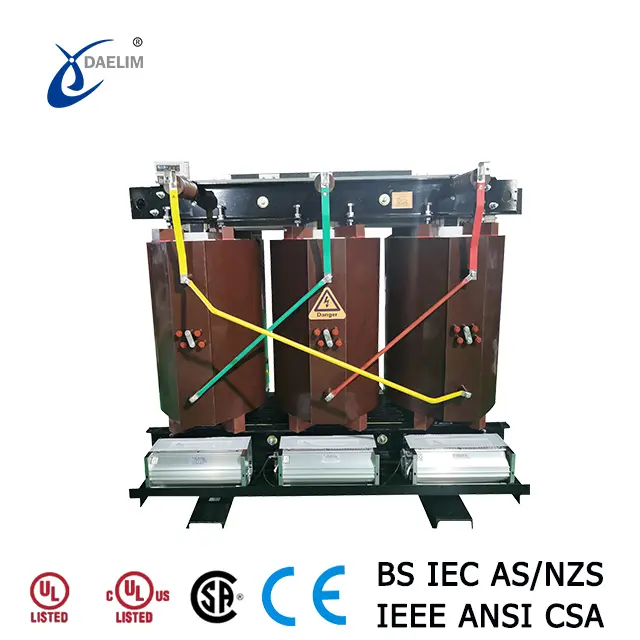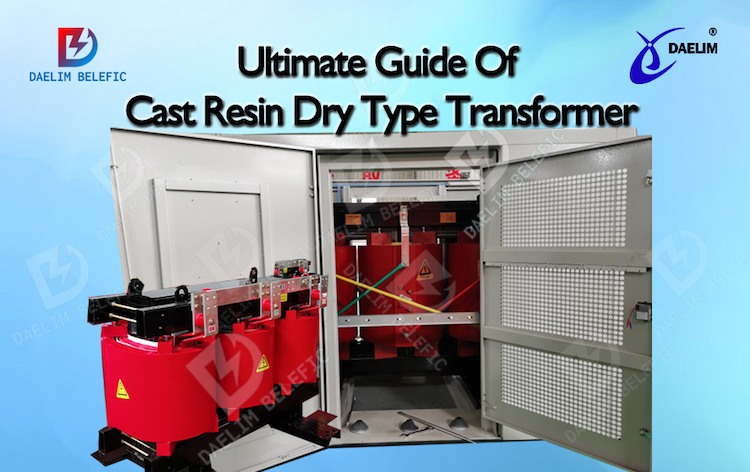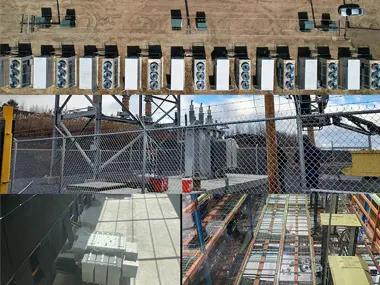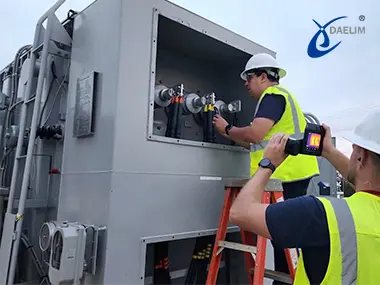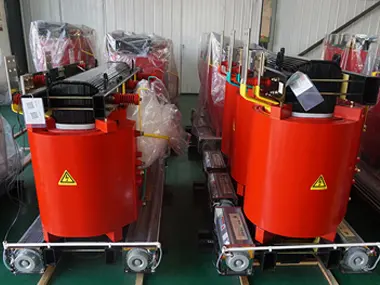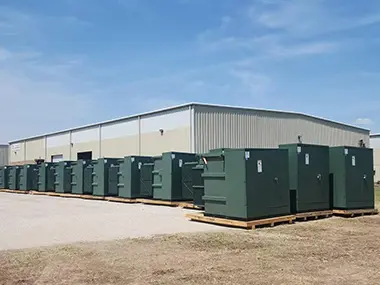Complete Guide on Dry Type Transformer Maintenance
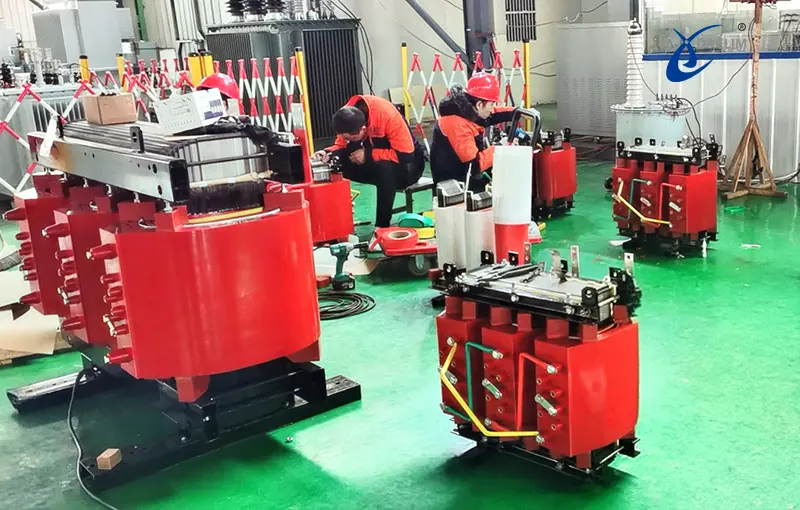
Maintenance is such a crucial part of a transformer's life that your dry type transformer will lose its efficiency and reliability if you don't perform scheduled maintenance on your transfer. Without proper maintenance you cannot guarantee a safe and reliable output from your dry type transformer.
This article is about dry type transformer maintenance. We will go through the different types of maintenance that are done throughout the useful life of a transformer. We will learn about when maintenance is done, how maintenance is done, and what are the parts and different types of tests involved in the dry type transformer maintenance.
Contact Daelim TransformerTypes of Dry Type Transformer Maintenance
You can perform three different types of maintenance on your dry type transformer. you can perform preventive maintenance, predictive maintenance and productive maintenance on different parts and during different times of a transformer's useful life.
Reading more about Transformer Lifespan
Preventive Maintenance
The preventive maintenance of your dry type transformer is just another name of the regular or scheduled maintenance of your dry type transformer. This is a maintenance service that you perform on your dry type transformer To ensure that the Transformer works with its optimal performance. During the preventive maintenance you can check the Transformer insulation, the cleaning of its components you can check the connections that they are tight or loss and remove any factor that can result in minor or major faults like short circuits for overheating.
Predictive Maintenance
The predictive maintenance of a dry type transformer is what came after the preventive maintenance and it is usually done based on the data and record collected during the preventive maintenance. The predictive maintenance is done on specific parts formally If the data gathered in the preventive maintenance judges that there might be something going wrong with a specific part or that can result in the complete failure of the transformer.
During the predictive maintenance, several inspection methods, tests, and Diagnostic tools are used to inspect the working condition, performance, and situation of a part or off entire transformer. You can either repair or replace the specific parts of your dry type transformer.
Corrective Maintenance
The collective maintenance of your dry dry transformer is what that can be done based on the data of preventive maintenance, the results obtained from predictive maintenance or it is done if there is a problem with the specific part or in the working of your dry type transformer. Recti maintenance is usually done to remove any problem for a factor that affects the working and efficiency of your dry type transformer. It is done to remove the specific factors like short circuits, blown fuse or broken connections. The collective maintenance can also be done in a regular manner in specific cases where your Transformer is usually installed off side for specific internal time. In this scenario you need to make sure that all parts are working correctly before the Transformer leaves the factory or workshop.
Learn more about Transformer Maintenance
When Dry Type Transformer Maintenance is Required?
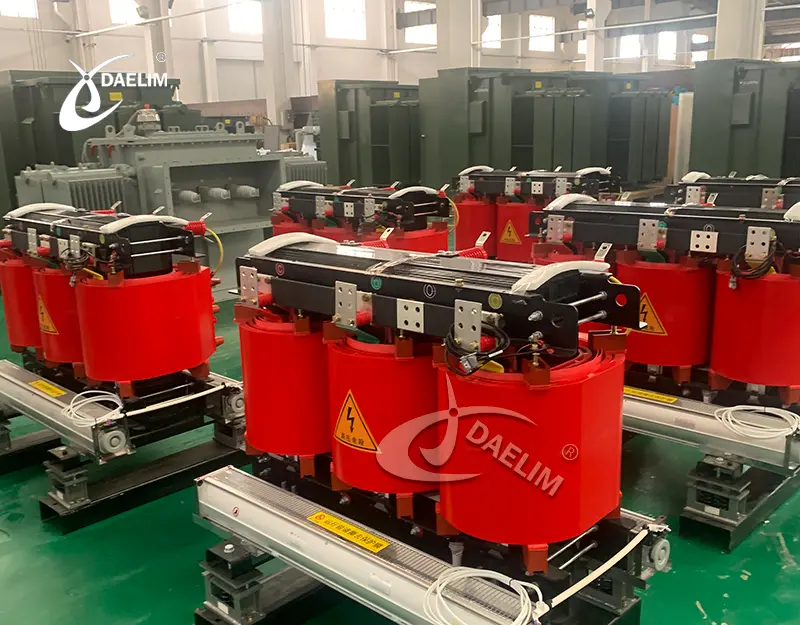 If you have a dry type transformer and you are looking for an exact number of days or exact number of hours after which you perform maintenance on your cross former, then there is no single answer to your query. It is not possible to give a single number of days or number of all after which your Dry type transformer needs maintenance.
If you have a dry type transformer and you are looking for an exact number of days or exact number of hours after which you perform maintenance on your cross former, then there is no single answer to your query. It is not possible to give a single number of days or number of all after which your Dry type transformer needs maintenance.
There are several factors that influence the maintenance requirement of dry type Transformers. It depends on your Transformer type, size, power capacity, the manufacturer, loading conditions, and the working conditions under which your dry type transformer performs. Based on these factors your Transformer might need maintenance after every 6 months or once every year.
What you can do is to perform inspections on a regular basis like every 2 weeks or once every month. These inspections will give you clear signs that whether or not your transformer needs maintenance. Following are the signs that indicate that specific dry type transformers need maintenance.
- You are observing unusual noises and more than normal vibrations in your drive transformer. This clearly indicates that your right Transformer needs maintenance.
- If you are observing the science of overheating over the sensor installed in your drive type transformer indicates excessive temperature in specific regions or in entire transformers. Then it is a clear sign that your transformer needs maintenance and might need replacement of parts.
- If you observe any deterioration in the Transformer insulation then it is a clear sign of wear and tear due to overheating or environmental factors and clear signs at your Transformer need measure replacements of parts.
- As most transformers are installed outdoors, so if you observe dust, dirt, debris, or moisture content accumulated on transformer parts specifically on cooling systems. Then it is a clear sign that your transformer needs preventive maintenance.
- Similarly, if you observe corrosion on electrical connections, loose connections, worn out wires then these are also signs that your transformer needed maintenance.
Learn more about Transformer Inspection
How Dry Type Transformer Maintenance is Performed?
How similar to when dry type transformer maintenance is required the answer of how dry type transformer maintenance is performed is not cleared or cannot be answered in a single sentence. it depends on the manufacturer recommendation to transformer type, size, power capacity, and the type of maintenance needed.
You understand the maintenance procedure. We will go through all the tools needed to perform inspection, testing, and maintenance. We will also go through some general steps that some skill worker or Transformer technicians may follow during the Transformer maintenance.
Get it free: How to test a power transformer?
Power Down
First step in the transformer maintenance procedure is to show that the Transformer power supply is switched off. making sure that there is no power input in your Transformer insurance is safe for both the Transformer and the technician working on the Transformer.
Visual Inspection
Second step here will be for you to perform the visual inspection of your dry type transformer. you need to show that there are no loose nuts or bolts, no loose wires or any shop object in the range that might injure the worker.
You might need to have following tools to perform inspection
- Calibration stickers and logbook
- Dry type transformer maintenance checklist
- Labels and marking pens
- Data recording device (transformer preventive maintenance checklist excel)
Cleaning of Transformer
So, after making sure that the Transformer power is off and it is clear for working the first thing you need to perform is to make your Transformer clean from all types of dirt, dust and all types of foreign objects like leaves. This cleaning also involves the maintenance tax as well where you make sure that any type of Rust on the Transformer tank or parts of the cooling system on the electrical connections is removed properly and with safety.
You might need the following inspection and cleaning tools to work efficiently.
- Flashlight or inspection lamp
- Insulation cleaning brushes
- Lint-free cloths and wipes
- Vacuum cleaner (for dust removal)
- Compressed air blower
- Isopropyl alcohol or transformer approved cleaning solution
Visual Inspection
After cleaning you need to perform the second visual inspection where you will inspect all the internal parts of the dry type transformer. You will Inspect the epoxy resin that covers the Transformer winding, the parts of the cooling system, and all electrical connections. With this visual inspection you will make a report of all the parts that need maintenance or replacement or further testing.
Tightening Connections
Following the second visual inspection and the report generated in the given fraction you will start tightening all the electrical connections and make sure that any part or Electrical connection that needs replacement or just maintenance is adjusted accordingly. you also make sure that all electrical connections or any type of rust.
You might need the following mechanical tool to tighten all electrical connections.
- Torque wrench
- Screwdrivers (flathead and Phillips)
- Nut drivers and wrenches
- Pliers (needle nose, insulated)
- Allen keys or hex keys
- Crimping tool
- Cable strippers
Transformer Testing
If the transformer winding and its insulation does not need any replacement then you need to perform certain dry type transformer testing like insulation resistance tests on the Transformer insulation and also perform several tests on the winding to check that there is no short circuit or any other issues with the electrical circuits of the transformer.
Following is a list of dry type transformer testing you might need to perform during transformer inspection
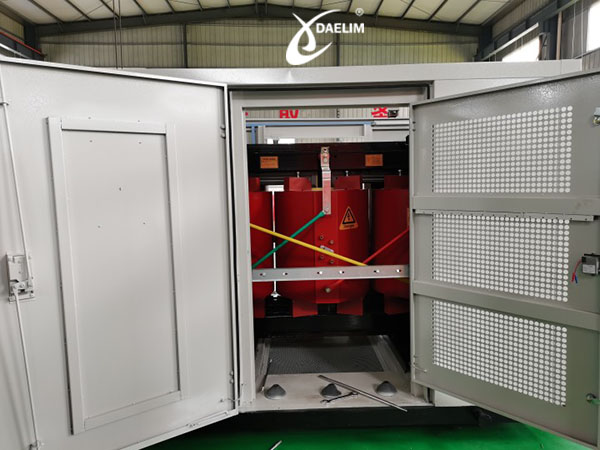 Visual Inspection
Visual Inspection- Insulation Resistance Test
- Transformer Turns Ratio (TTR) Test
- Power Factor and Dissipation Factor Testing
- Partial Discharge Testing
- Temperature and Thermal Scanning
- Load and No Load Testing
You might need the following tools to perform the above mentioned dry type transformer testing.
- Insulation resistance tester (Megger)
- Transformer turns ratio (TTR) tester
- Power factor and dissipation factor tester
- Partial discharge detector
- Digital multimeter (DMM)
- Clamp meter
- Infrared thermal imaging camera
- Contact thermometer or temperature gun
- Dielectric test set
- Resistance ohmmeter
Functionality Test
After making the Transformer winding insulation all good you need to perform is complete functionality test where you will test each and every electrical connection part and other associated system like the cooling system or monitoring system. you will make sure that all parts of the cooling system Earlier from all type of dust and does not need any repair or replacements.
Final Inspection
The final step is to show that all the information provided in the initial inspection reports has been done properly. You need to go through the Transformer Ispat checklist to make sure there is no other task remaining for dry type Transformer maintenance.
Safety Precautions For Dry Type Transformer Maintenance
There are certain safety precautions that you need to follow during the dry type transformer maintenance. These safety precautions make sure that the worker and Transformer and all the associated with the Transformer maintenance remain safe and reliable.
- Always have all the standard safety Gear on you all the time during the dry type Transformer maintenance.
- You should always use standard tools and equipment that is recommended by the Transformer manufacturer for the Transformer maintenance.
- You need to follow all the safety steps and the procedures of maintenance recommended by the Transformer manufacturer.
- While doing maintenance you should show that you are working in a very well ventilated environment and have all the necessary first aid kit with you.
- Always may show that there is no electric voltage applied and no electricity coming into the Transformer before doing any type of inspection or maintenance work.
- After maintenance make sure you remove all types of tools and safety items that you apply on the transformer.
Best Practices for Dry Type Transformer Maintenance
- Always perform Transformer maintenance on a regular inspection and maintenance schedule.
- Always use standard tools and always follow this standard procedure of inspection and maintenance and only work on parts that you are authorised and expert of maintaining.
- Always keep a proper and complete record of all types of inspection, maintenance, part replacements, and tests performed on dry type transformers.
- Follow industry standards such as IEEE, IEC, and NEMA guidelines for transformer maintenance.
Conclusion
Dry type transformers are very sensitive types of electrical Transformers as they do not have any oil for cooling or insulation. So any negligence in their maintenance or inspection can result in parts being damaged or inverse case a completely blown transformer. We have shared with you some signs about when you should start the maintenance work on your right at the transformer. We have also shared with you the general steps on which you can perform the inspection testing and maintenance and replacement of parts of your right. We have also provided you with a list of tools and the tests that you need to have and perform on your dry type transformer during its maintenance work.
Following Up
Dry type transformers need proper and regular maintenance to perform efficiently. We at Daelim, offer dry type transformers with complete guidelines on how to do their proper and regular maintenance. If you have any questions about transformer maintenance, you can Contact Us here.
Related Products
Related Article
Distributed Energy and Temporary Power
Daelim Transformer provides reliable, efficient solutions for the growing demands of distributed energy and temporary power systems, including solar, wind, and data center applications. With deep expertise and proven performance, Daelim ensures safe and sustainable electricity delivery while addressing the unique challenges of today’s evolving energy landscape.
Cast Resin Transformer: Definition, Types, Benefits, Applications, Maintenance
The cast resin transformer is a type of dry transformer that uses epoxy resin to encapsulate the windings and core, providing excellent insulation and environmental protection.
The Impact of Operating Environment on Transformer Design
Electrical transformers are custom-designed based on specific application needs, not a one-size-fits-all model. While voltage input/output is important, other operating conditions also impact design. This article explores how environments like renewable energy plants and data centers influence transformer design, highlighting the importance of tailored solutions for efficient electricity distribution.
Guide to Transformer Failures
Transformer failure disrupts power flow from plants to users, with no substitute device available. This guide explains causes, types, categories, and severity levels of transformer failure, helping users understand and prevent such critical breakdowns to maintain reliable electricity distribution.
Dry Type Transformer Cooling Methods
This article explains various cooling methods for dry type transformers, detailing how each method works, the components involved, and their pros and cons. It aims to help readers choose effective and efficient cooling solutions by understanding different systems and their performance characteristics in transformer operation.
Understand the Transformer Lifespan
Electrical transformers have a critical role in power distribution and a defined lifespan known as "useful life." Sudden failures disrupt electricity supply, making timely replacement essential. Key factors affecting lifespan include usage, maintenance, and environment. Understanding these helps predict remaining life and extend transformer longevity through proper care and condition monitoring.

